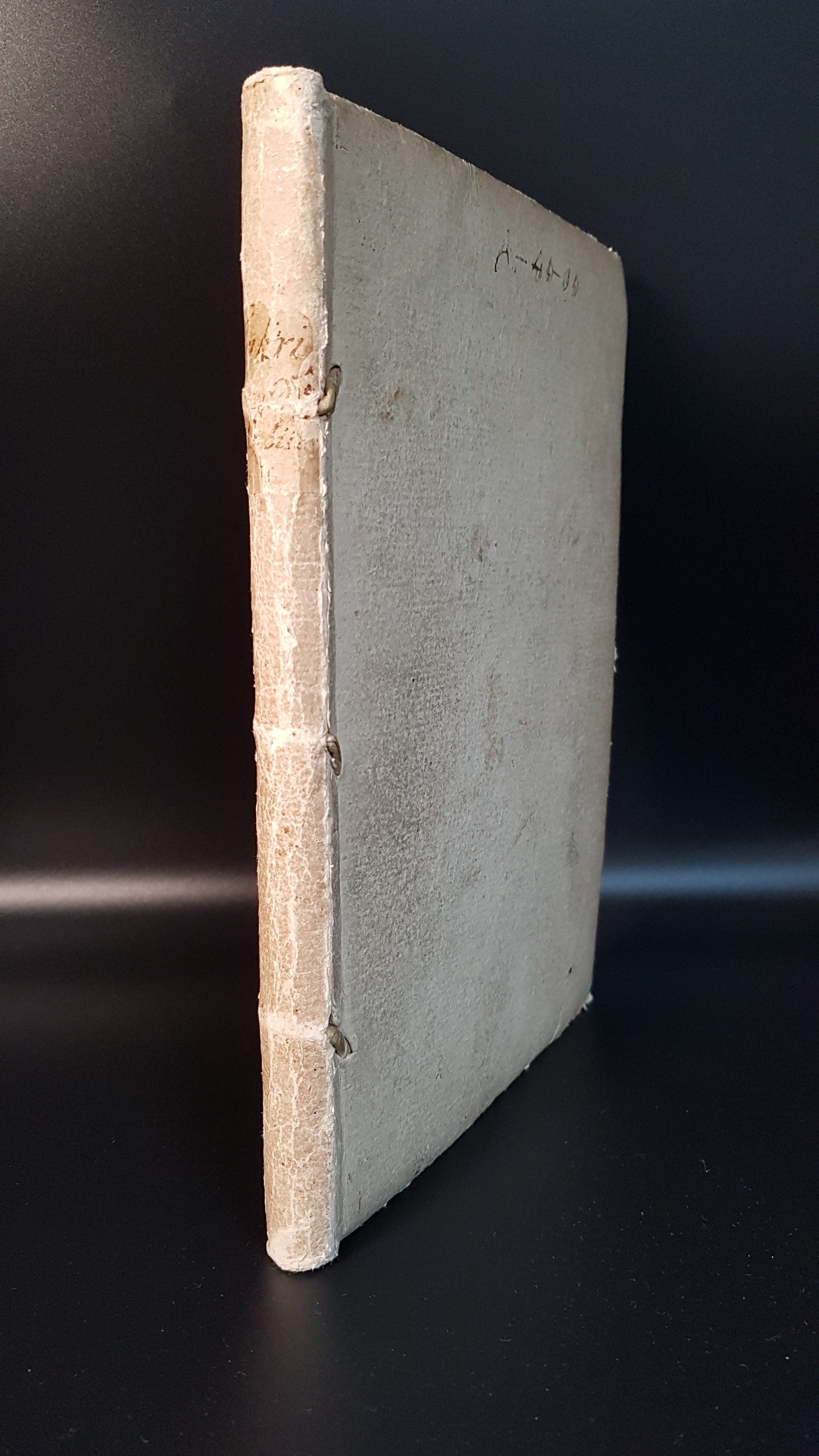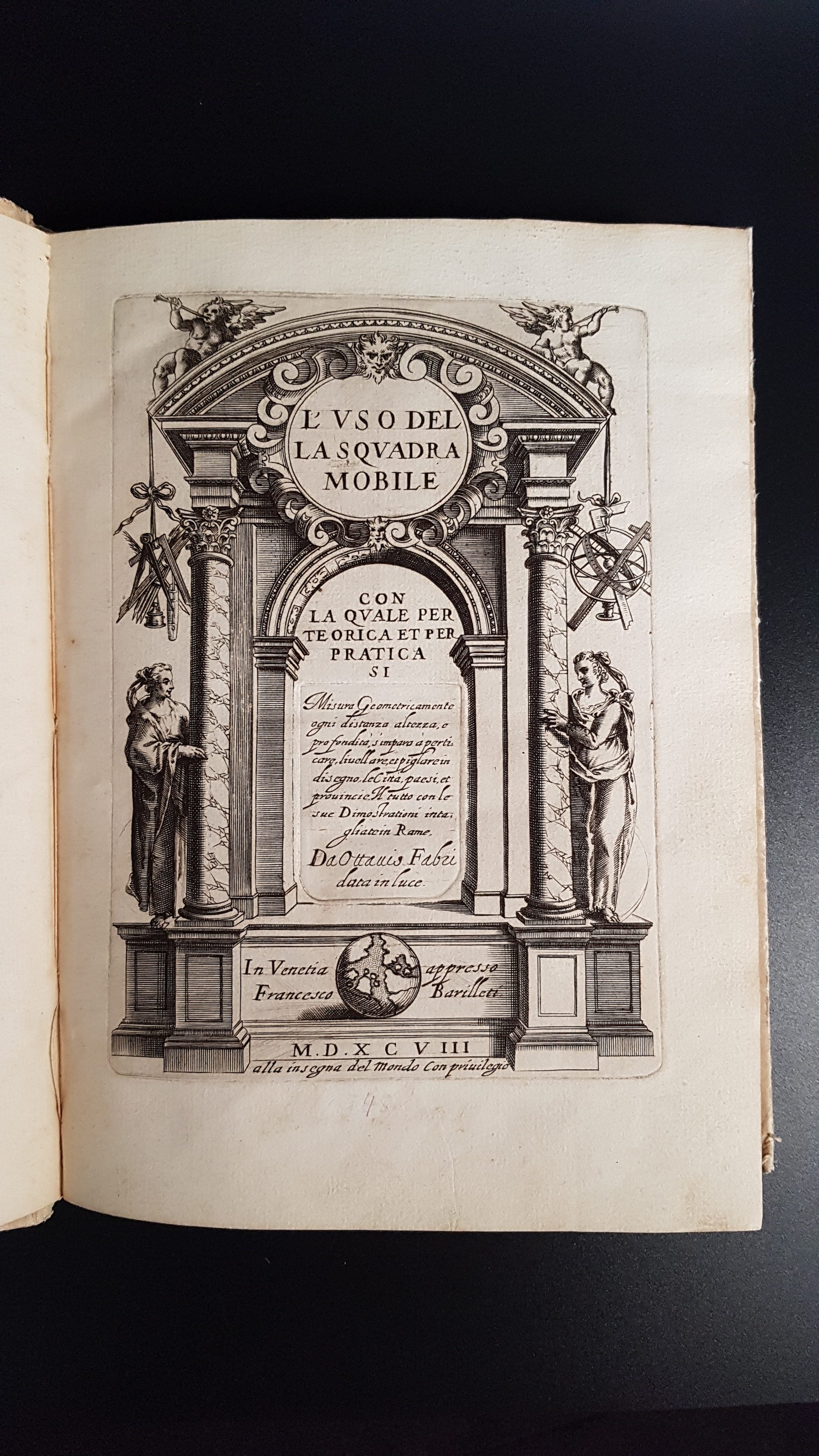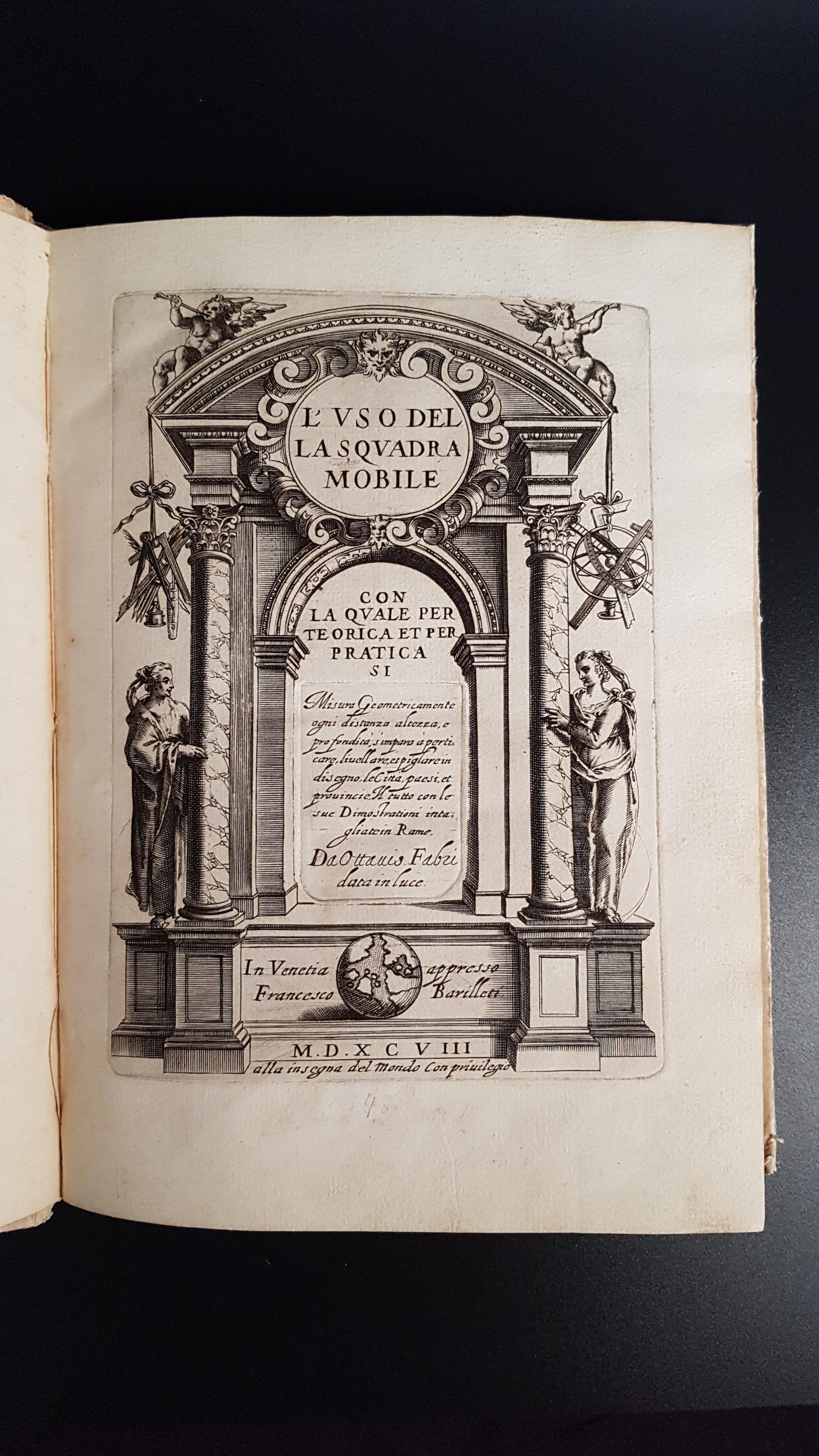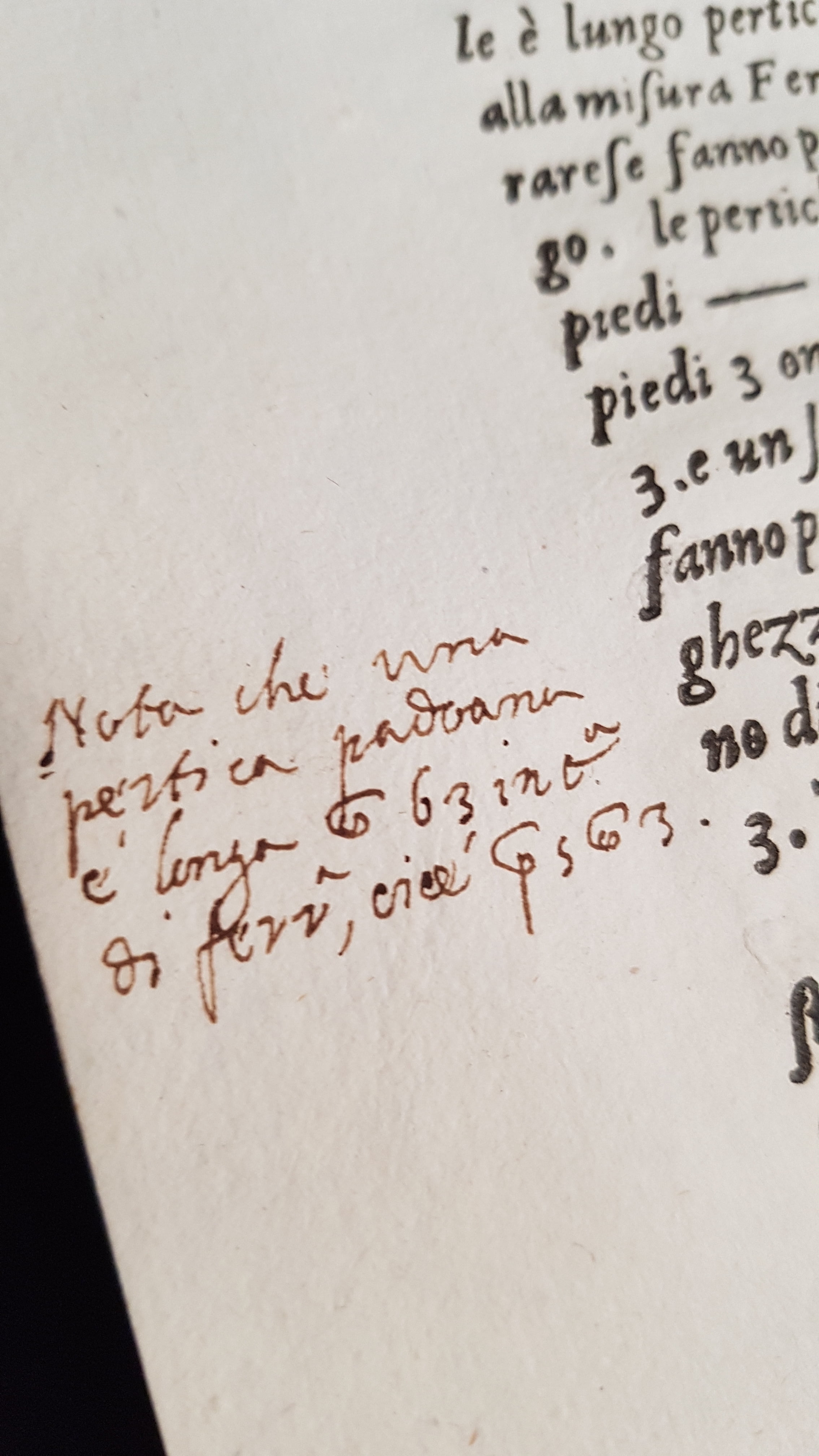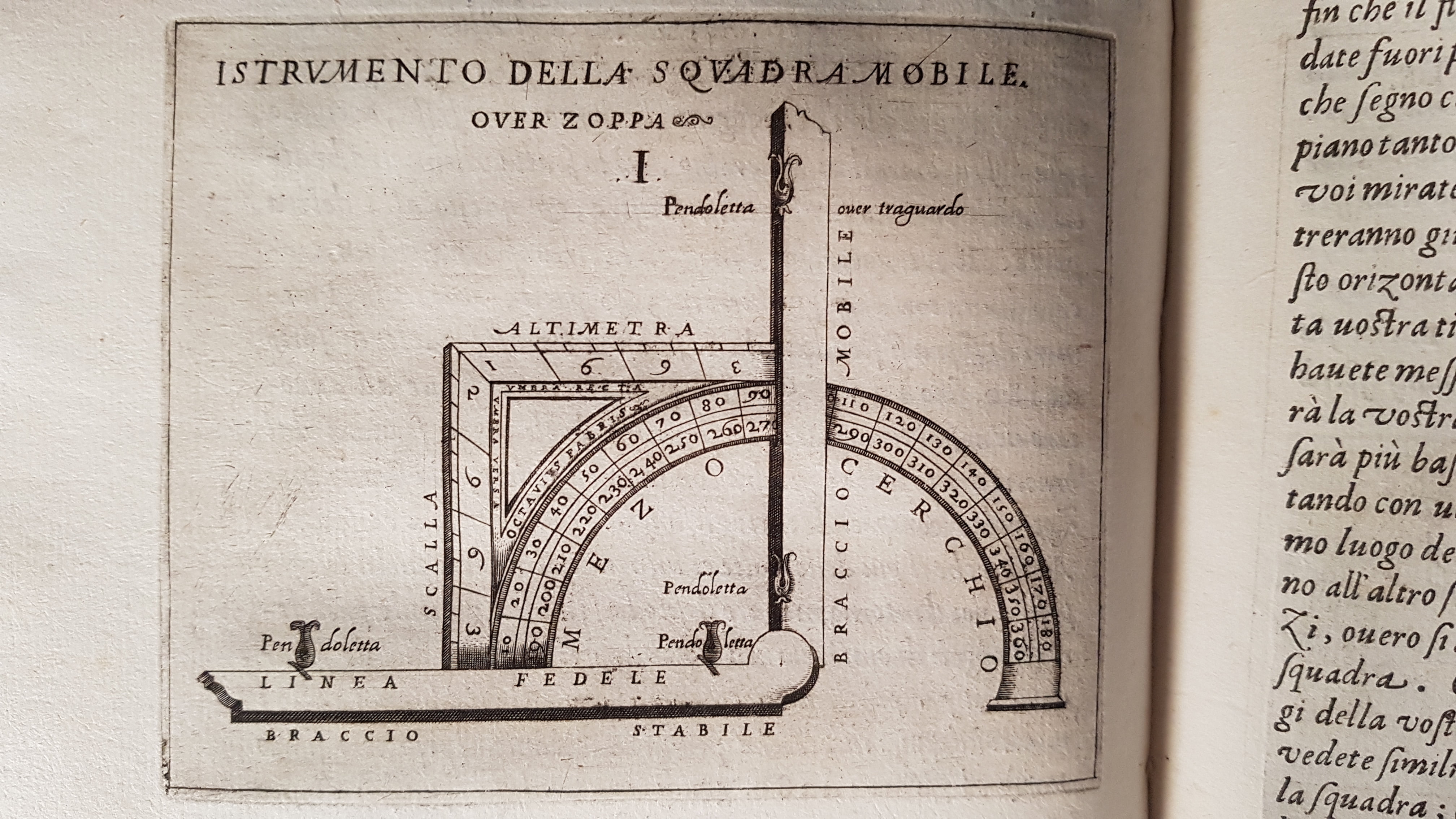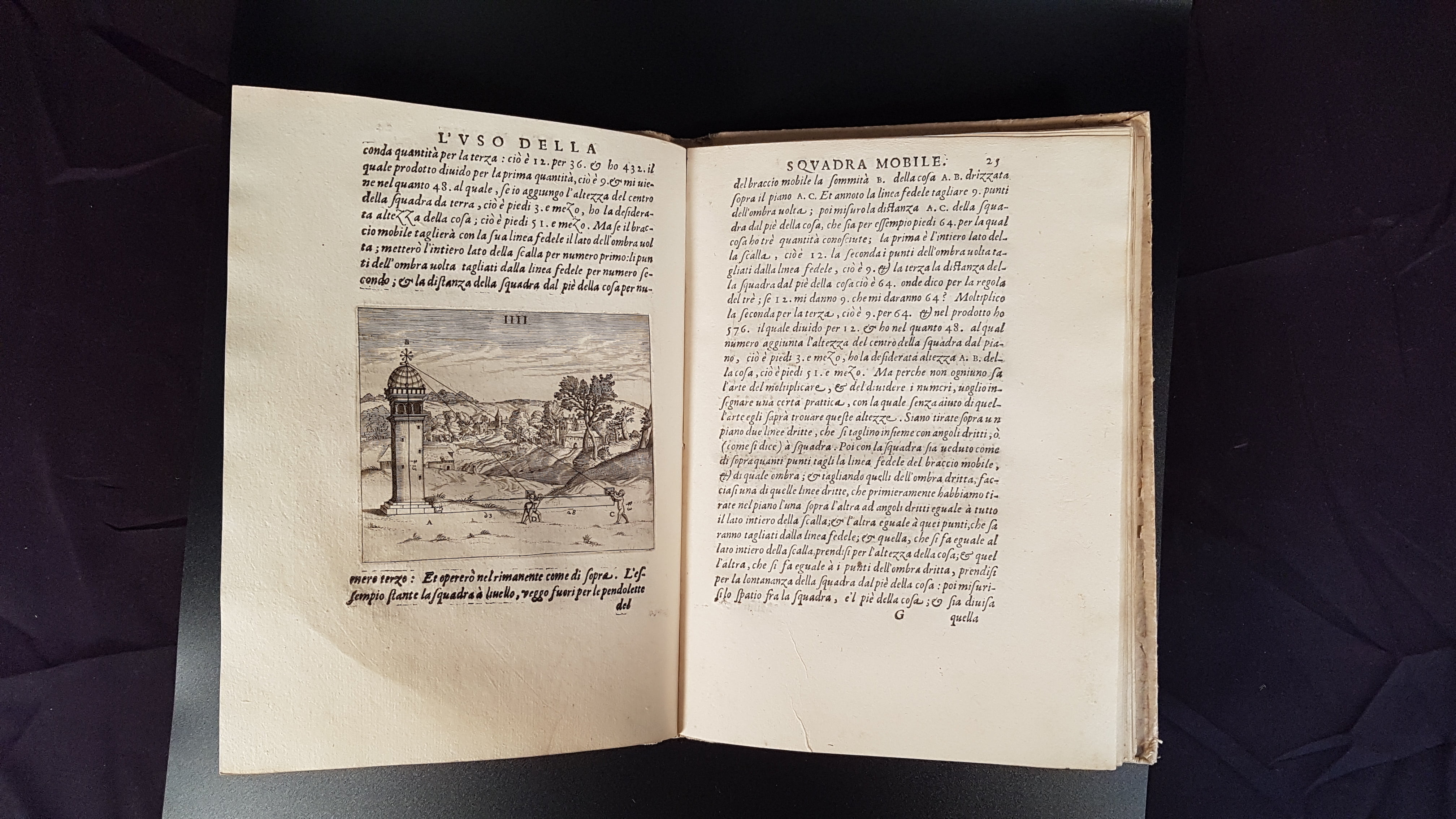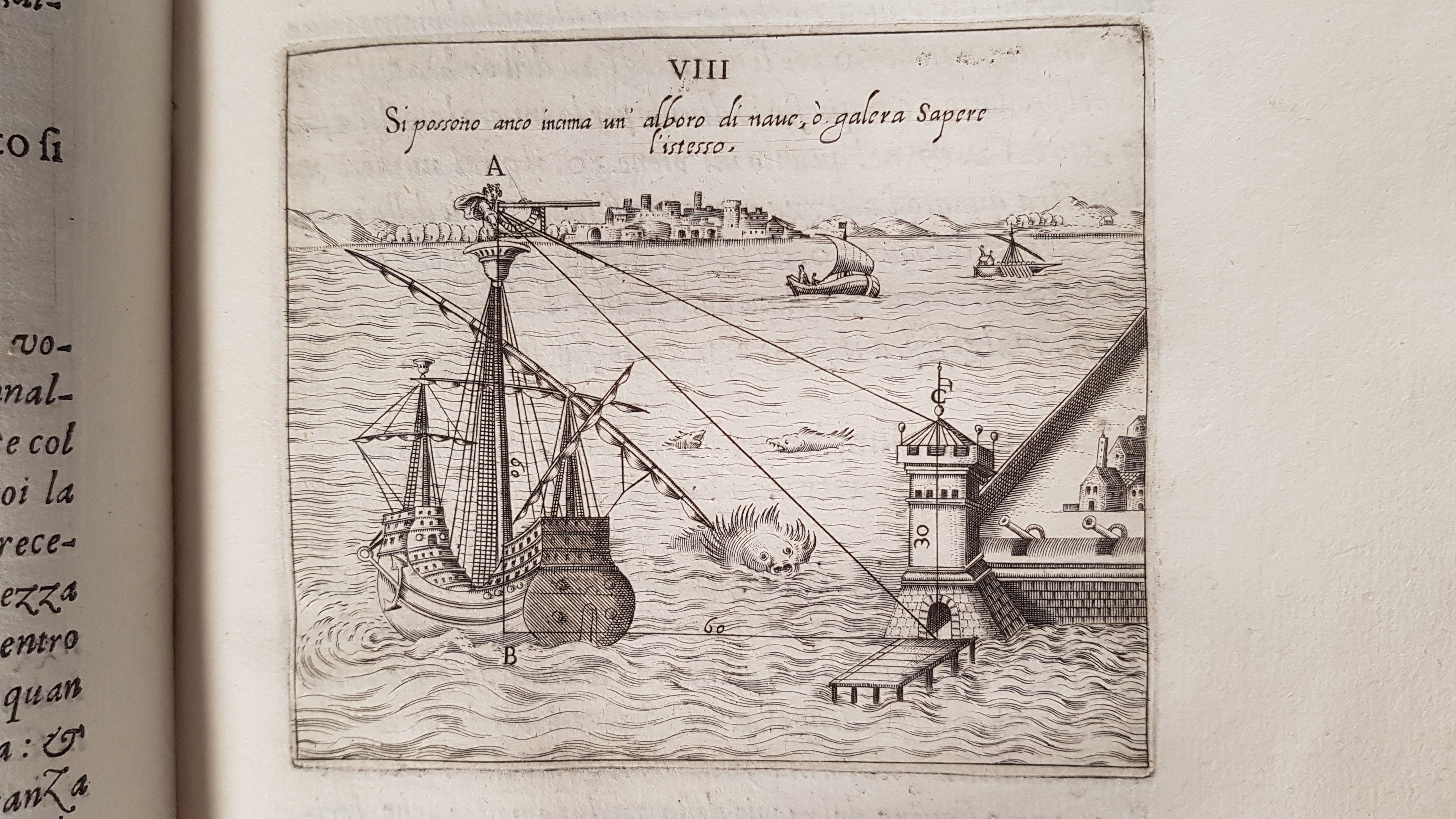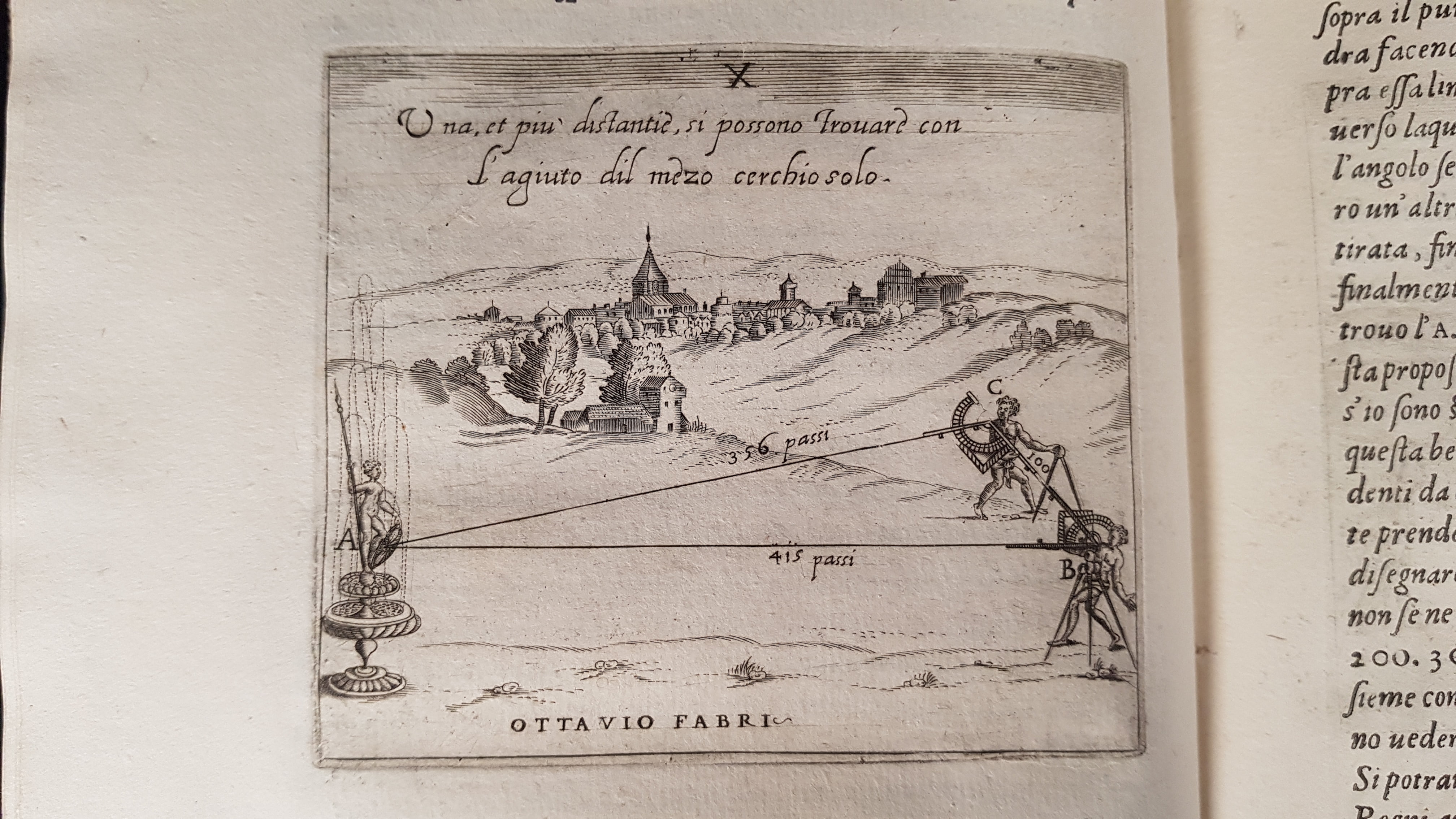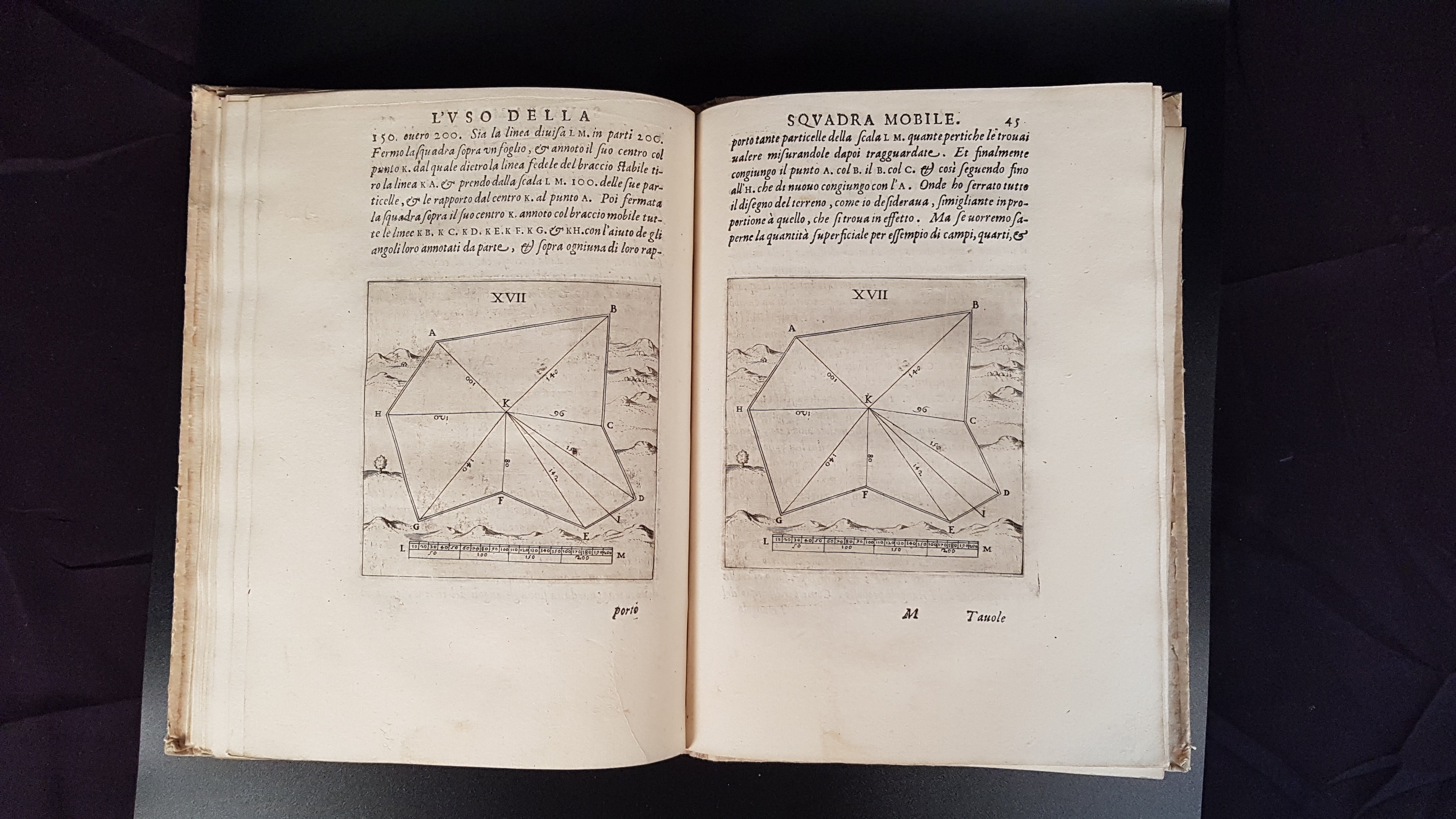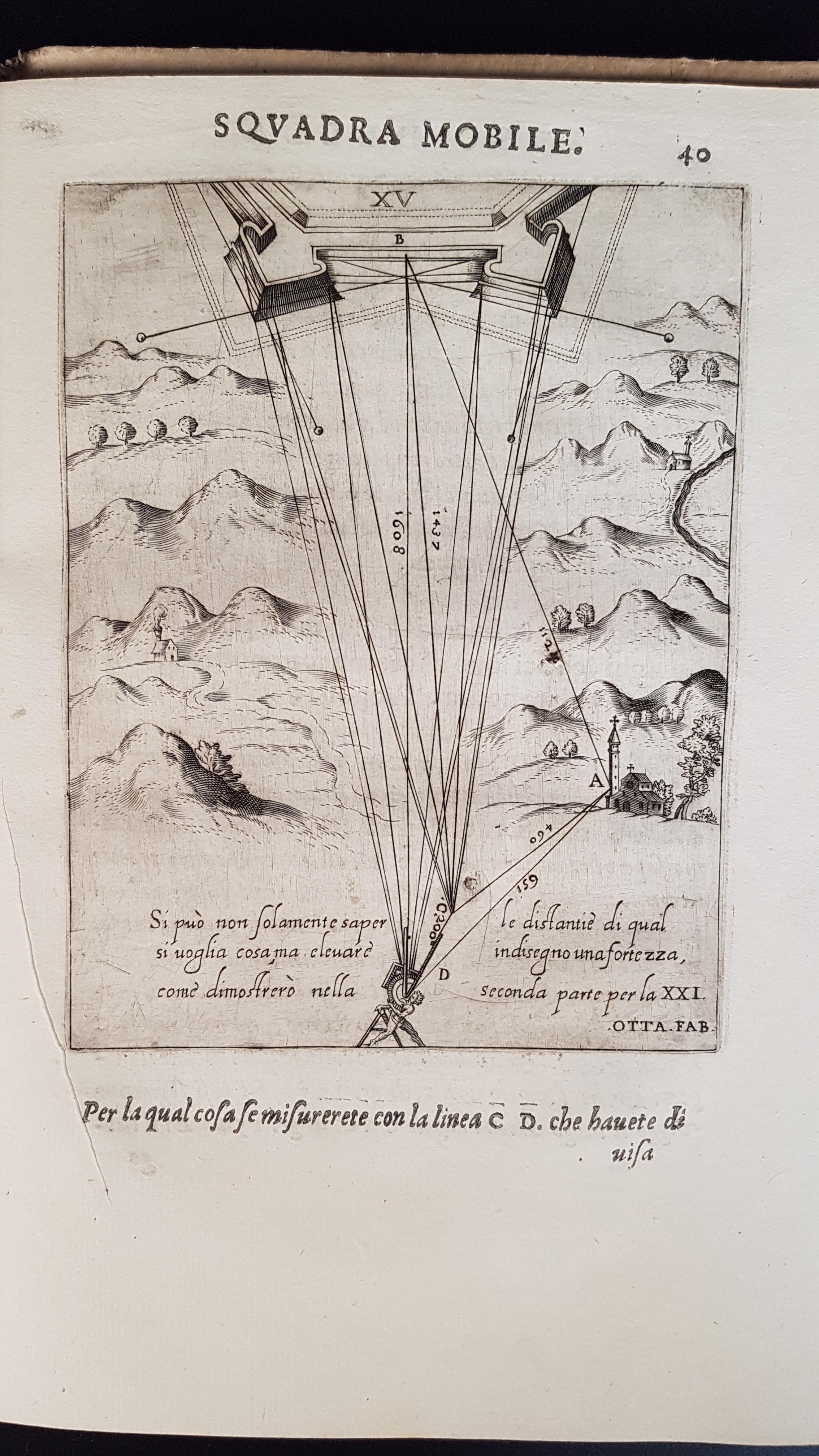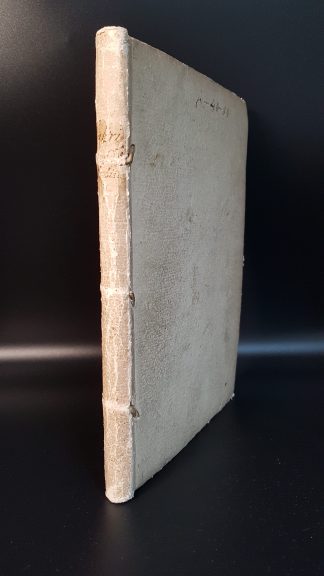FABRI, Ottavio
L’uso della squadra mobile
Venice, appresso Francesco Bariletti, 1598£2,750.00
FIRST EDITION. 4to. pp. (ii) 58 (vi), without the ‘squadra mobile’ plate as usual. Italic letter, with Roman. Engraved architectural t-p with female allegorical figures, putti and globe, 25 half-page engraved illustrations, decorated initials, head- and tailpieces. Little thumbing or minor marginal spotting in a few places, one plate superimposed presumably by way of correction. An excellent wide-margined copy, on thick paper, in old carta rustica, recased, bookplate of Erwin Tomash to front pastedown, the odd contemporary marginalia. In modern folding box.
An excellent copy of the first edition of this important work on the application of triangulation. Ottavio Fabri (fl. late C16-early C17) was an Italian mathematician of whom little is known. His greatest contribution to the discipline, immortalized in this work, was the invention of the ‘squadra mobile’, a brass geometrical instrument to ‘measure, level and transfer onto paper every distance, height and depth’, with applications in astronomy, geometry and the measuring of terrain. The edition was printed in two issues with differing preliminaries, though no priority has been established. The first section is devoted to measurements and includes comparisons between units used in different cities (the ‘Braccio toscano’ in Florence, the ‘Tornadure’ in Cervia) or countries (‘Piedi’ in France and the Trevigian ‘Pertica’ in Cologne). He proceeds to explain the construction of the instrument; this part was illustrated by an engraved plate portraying the ‘squadra mobile’, absent in most copies. The best material for the instrument, he found, is copper, a piece of which—‘as thick as a knife’s back’—can be bought ‘from any ironmonger in town’. He even advertised the best craftsman in Venice to assemble the instrument, ‘M. Battista…degli Horologli’ in his Spadaria shop, who made clocks and scales. The rest, illustrated with handsome engravings, explains the most common applications of the instruments in measuring from various positions the distance, depth and height, in relative and absolute terms, of buildings, hills, allotments, etc. The ‘squadra mobile’ could even be used to map a city’s area without a compass both from inside or outside its walls. Illustration XIII pasted on p. 37 appears to have been an editorial afterthought as it is also found in the NYPL copy.
Riccardi I/1, 433-34; BM STC It., p. 241; Brunet II, 1151 (mentions this ed.); Honeyman IV, 1259 (1615 ed.).In stock


